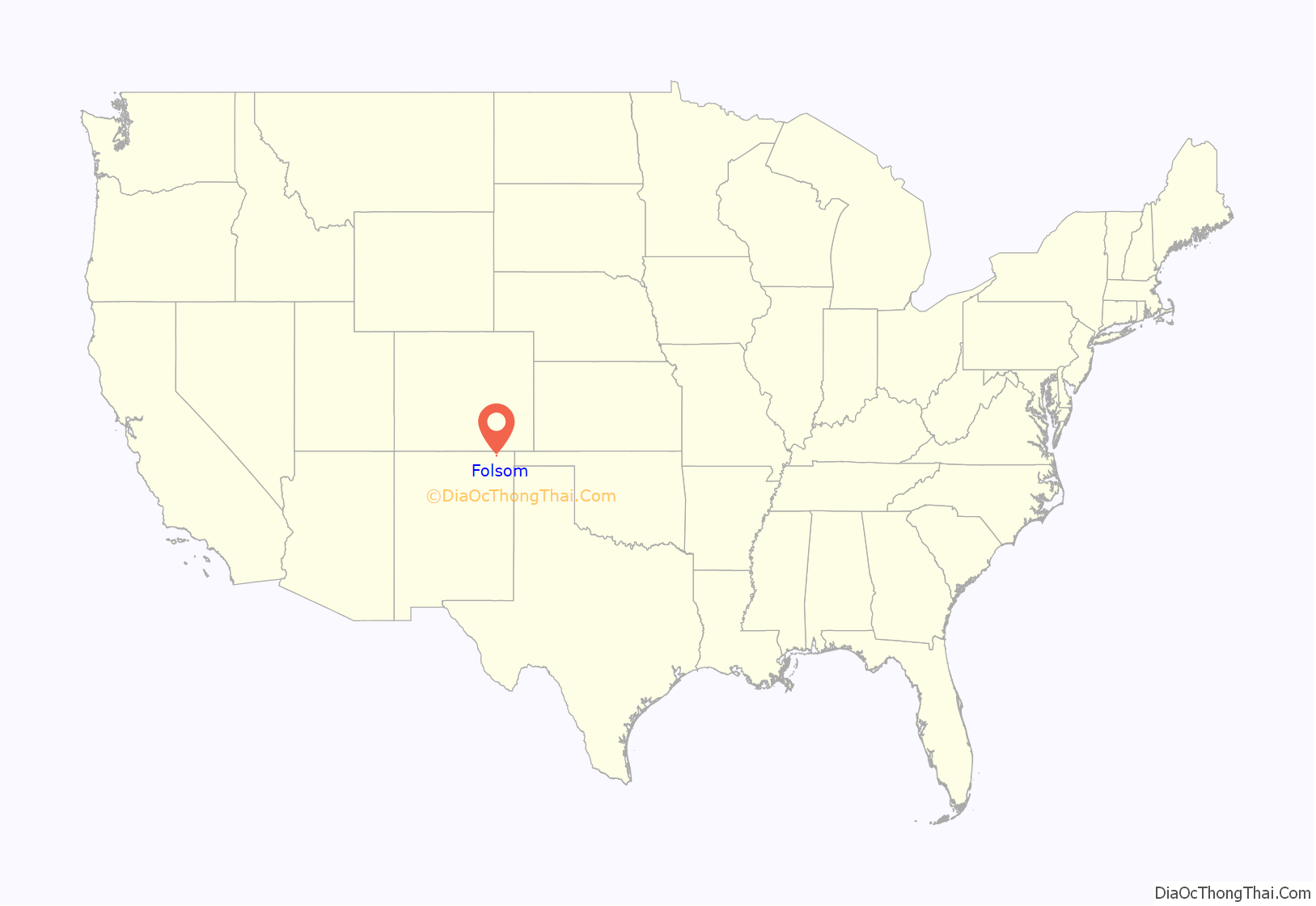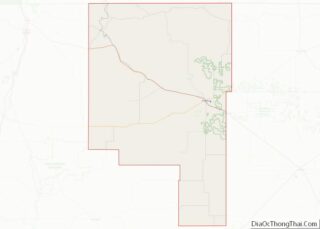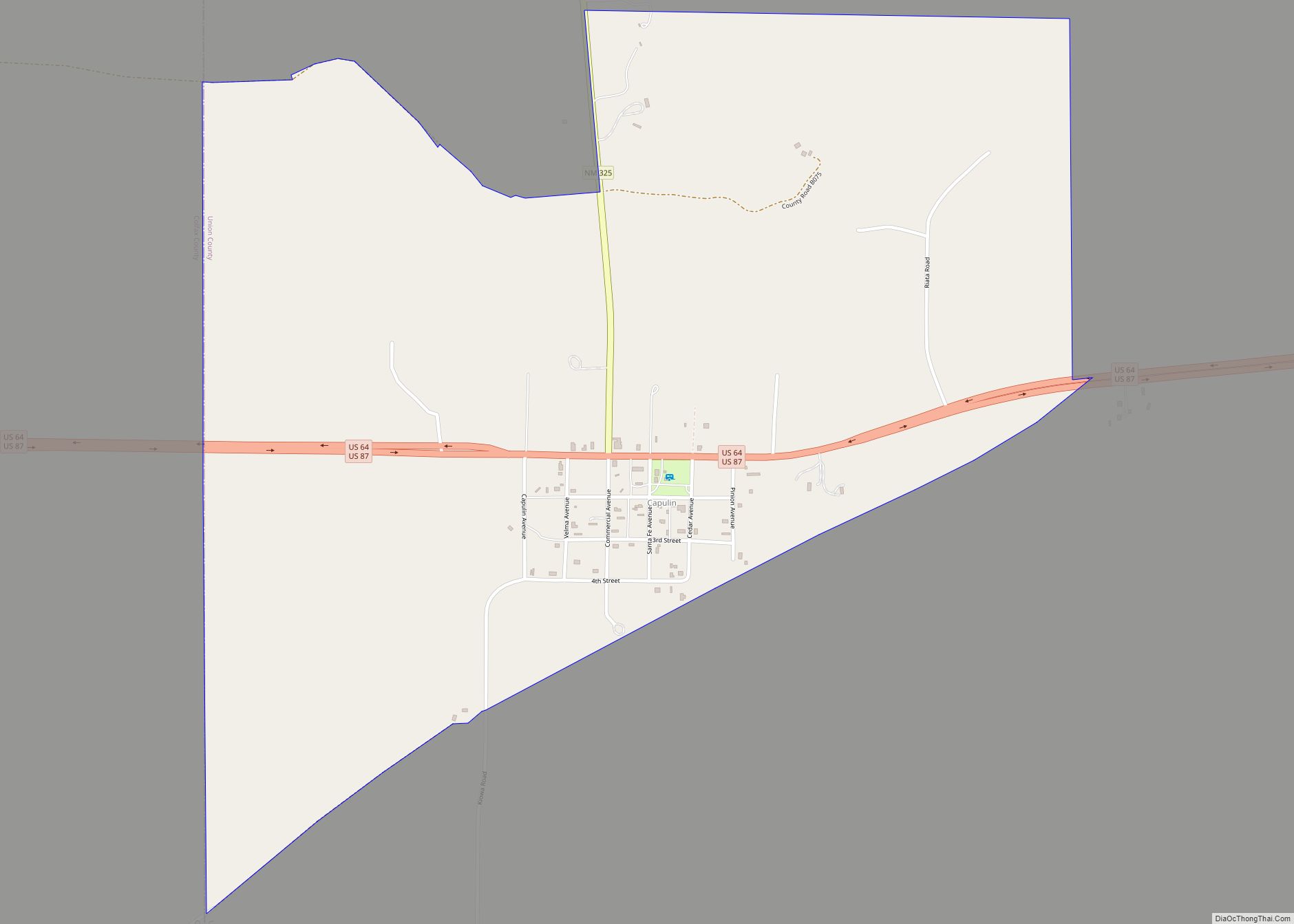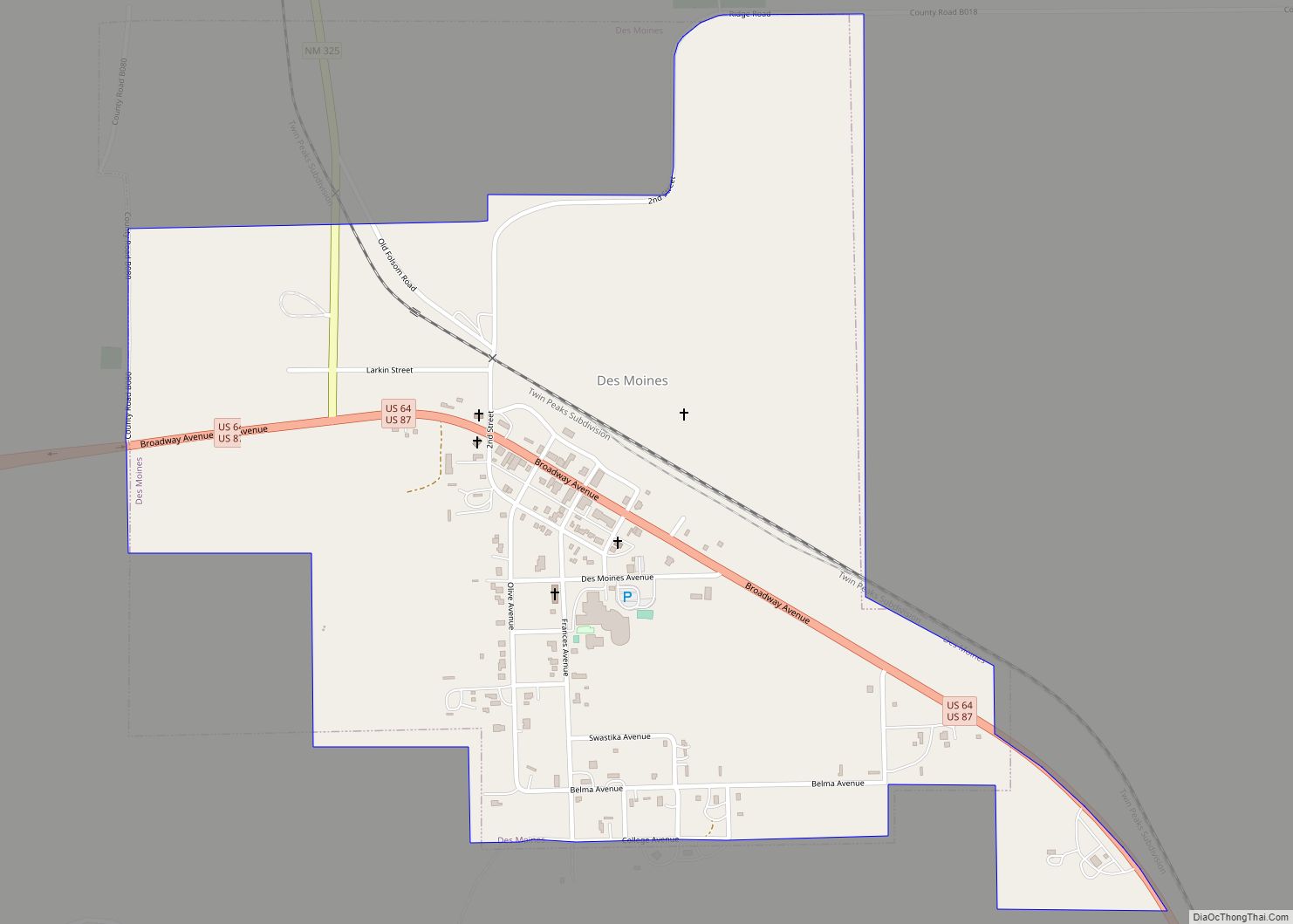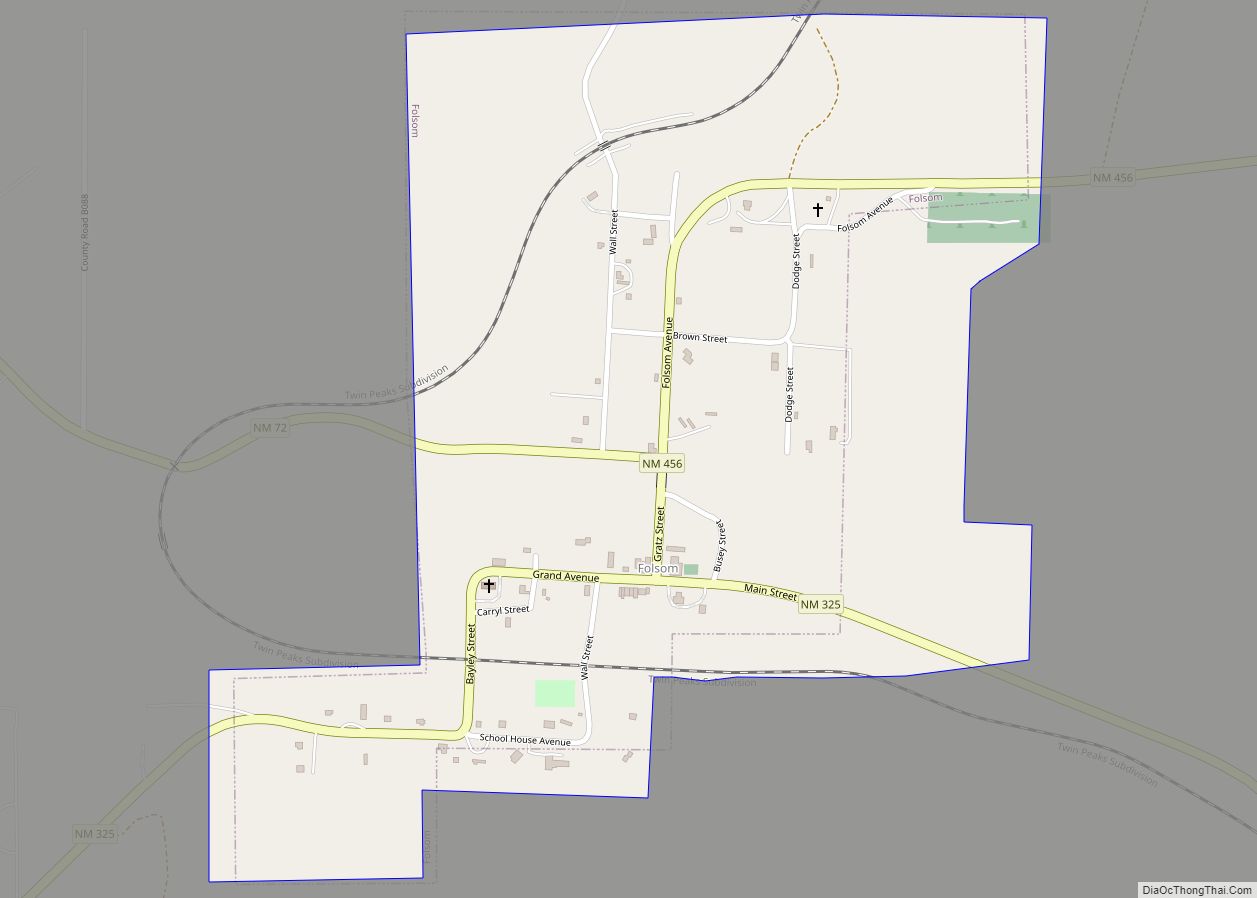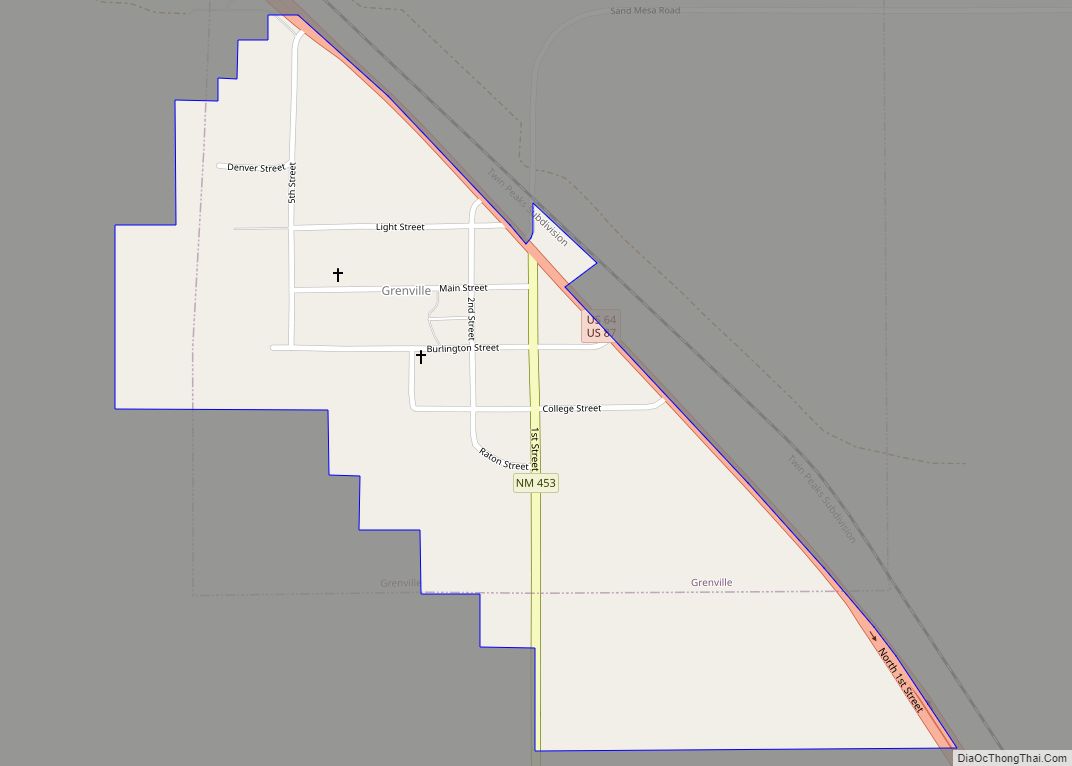Folsom is a village in Union County, New Mexico, United States. Its population was 56 at the 2010 census, down from 75 in 2000. The town was named after Frances Folsom, the fiancée of President Grover Cleveland.
| Name: | Folsom village |
|---|---|
| LSAD Code: | 47 |
| LSAD Description: | village (suffix) |
| State: | New Mexico |
| County: | Union County |
| Elevation: | 6,391 ft (1,948 m) |
| Total Area: | 0.65 sq mi (1.69 km²) |
| Land Area: | 0.65 sq mi (1.69 km²) |
| Water Area: | 0.00 sq mi (0.00 km²) |
| Total Population: | 51 |
| Population Density: | 78.34/sq mi (30.23/km²) |
| ZIP code: | 88419 |
| Area code: | 575 |
| FIPS code: | 3526780 |
| GNISfeature ID: | 0902249 |
Online Interactive Map
Click on ![]() to view map in "full screen" mode.
to view map in "full screen" mode.
Folsom location map. Where is Folsom village?
History
Folsom gives its name to the nearby type site for the Folsom Tradition, a Paleo-Indian cultural sequence dating to between 9000 and 8000 BC. The Folsom site, about 8 miles west of the village, was excavated in 1926, and found to have been a marsh-side kill site or camp where 23 bison had been killed using distinctive tools, known as Folsom points.
In the first half of the 19th century, the region was a hunting ground for Comanche, Ute, and Jicarilla Apache Indians. The first white settlement near Folsom was Madison, settled in 1864 and named for its founder, Madison Emery. In 1877, a post office was established. Madison became a ghost town in 1888 when the Colorado and Southern Railroad was completed and Folsom was established nearby on the railroad line. The train was held up three times near Folsom by Black Jack Ketchum and his gang. The final robbery in 1899 led to the capture and hanging of Ketchum.
Folsom prospered in the early years, with the largest stockyards west of Fort Worth. Homesteaders moved in and attempted to farm, and the town reached a peak population of nearly 1,000. The area proved unsuitable for farming, though, because of drought, and large ranches soon replaced the small farms. The town suffered a blow from which it never recovered on August 27, 1908, when a massive rainstorm caused a devastating flood, which nearly destroyed the town and killed 18 people. (Flash flooding from the same storm also uncovered the bison bones that George McJunkin found in Dead Horse Arroyo, which later became known as the Folsom site.)
A high school operated briefly in Folsom. Its only graduates were three students in 1931. In 1966, the elementary school at Folsom closed and the students transferred to the school in Des Moines, 8 miles away. Folsom has a post office.
Folsom Road Map
Folsom city Satellite Map
Geography
According to the United States Census Bureau, the village has a total area of 0.5 sq mi (1.3 km), all land.
Folsom is situated in a wide valley near the headwaters of the Cimarron River, locally known as the Dry Cimarron, as it runs underground during part of its course through eastern New Mexico. The village is ringed by buttes, mesas, and old volcanic cones and lava flows. Most of the valley is rich grassland, with a pinyon pine and juniper forest found on slopes and in rocky areas. Ponderosa pines are found in canyons and at higher elevations. Large ranches and cattle grazing are typical of the area, although some irrigated agriculture is found downstream from Folsom. Hunting for deer, bear, elk, pronghorn, and turkey is popular on local ranches.
Capulin Volcano National Monument is located 7 mi (11 km) south of Folsom. Rising to 8,182 ft (2,494 m) above sea level, Capulin is the highest mountain near Folsom. Folsom Falls is about 3 miles northeast of the town, along New Mexico State Highway 456. The Cimarron River, only a small stream a few feet wide here, is stocked with trout annually. Eight miles (13 km) west of the city below Johnson Mesa is Wild Horse Arroyo, where in 1908, a cowboy named George McJunkin discovered the bones of an extinct bison. This archaeological find later proved ancient man had been in the Americas at least 10,000 years, far longer than earlier believed.
Folsom is commonly called a “ghost town”, as it has hardly any active businesses. Most community life centers around the Folsom Museum, established in 1966 in the Doherty Mercantile building. The museum, with a large collection of local artifacts, sponsors several events each year. It is open seven days a week between Memorial Day and Labor Day.
See also
Map of New Mexico State and its subdivision: Map of other states:- Alabama
- Alaska
- Arizona
- Arkansas
- California
- Colorado
- Connecticut
- Delaware
- District of Columbia
- Florida
- Georgia
- Hawaii
- Idaho
- Illinois
- Indiana
- Iowa
- Kansas
- Kentucky
- Louisiana
- Maine
- Maryland
- Massachusetts
- Michigan
- Minnesota
- Mississippi
- Missouri
- Montana
- Nebraska
- Nevada
- New Hampshire
- New Jersey
- New Mexico
- New York
- North Carolina
- North Dakota
- Ohio
- Oklahoma
- Oregon
- Pennsylvania
- Rhode Island
- South Carolina
- South Dakota
- Tennessee
- Texas
- Utah
- Vermont
- Virginia
- Washington
- West Virginia
- Wisconsin
- Wyoming
